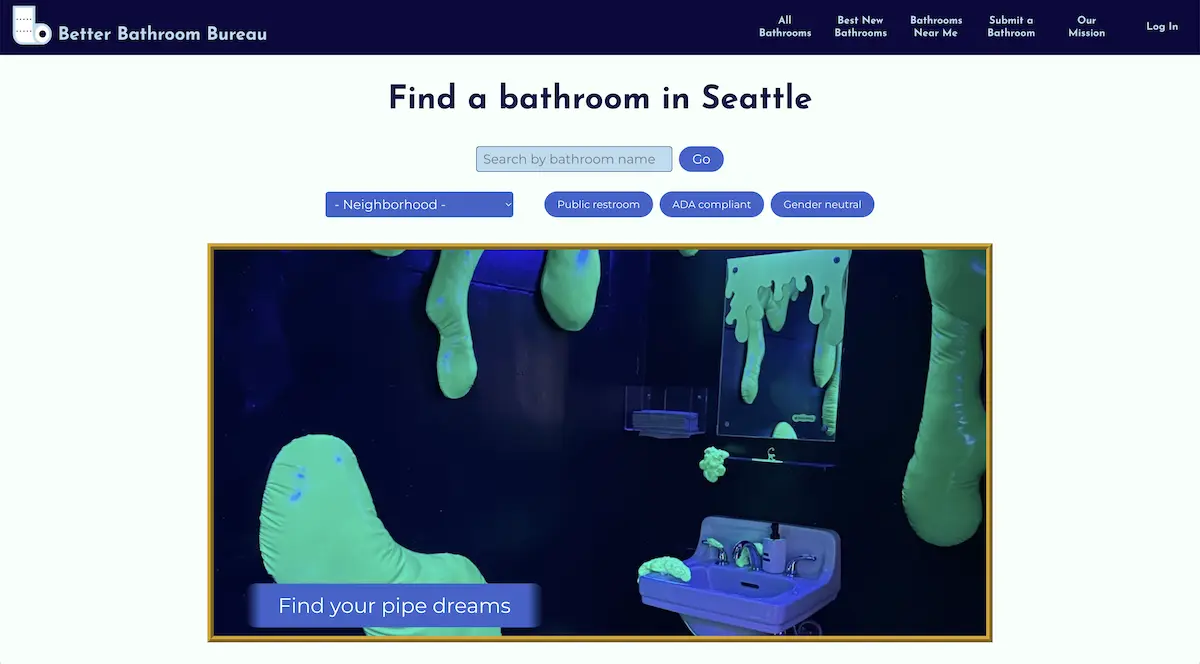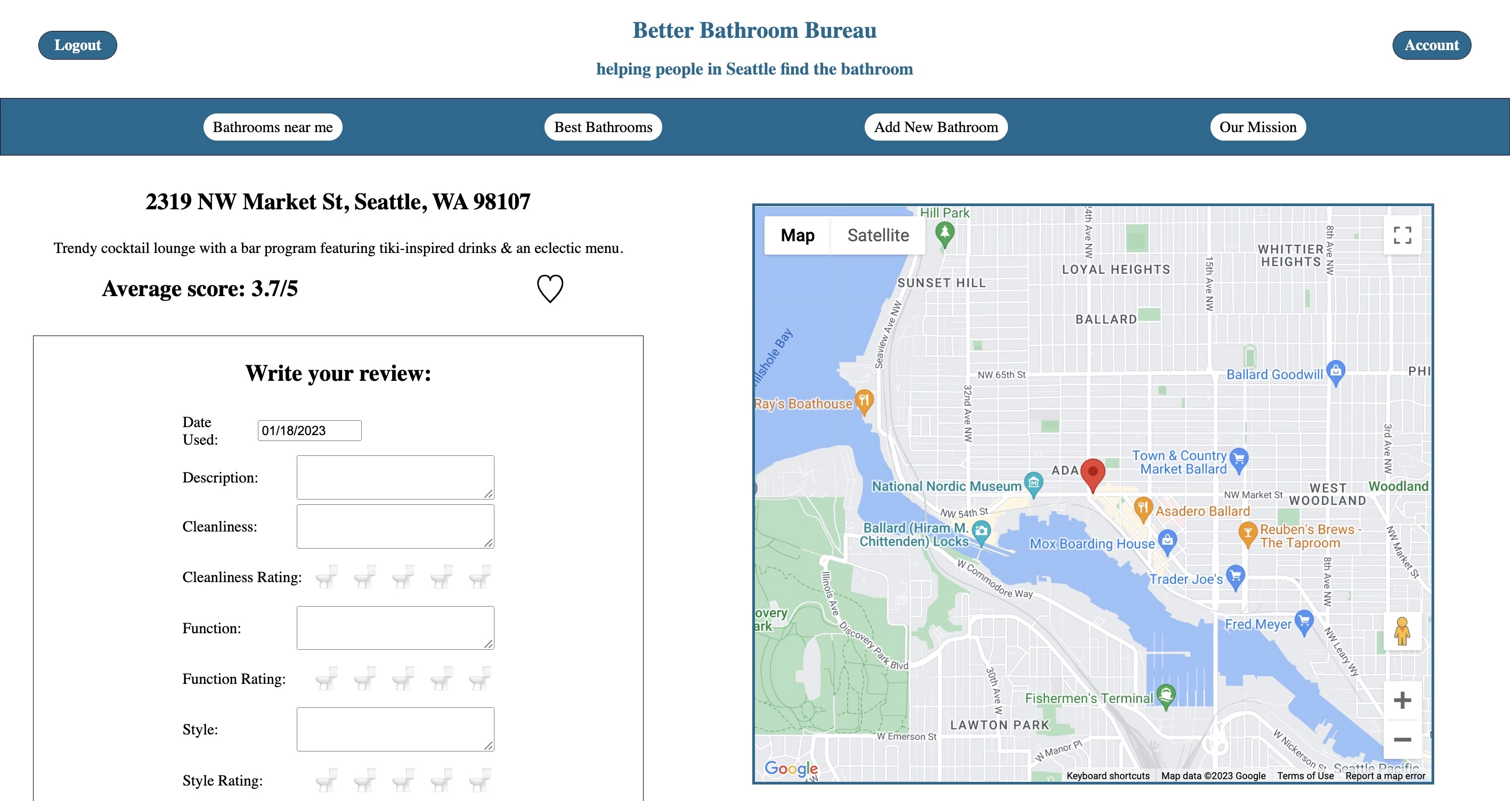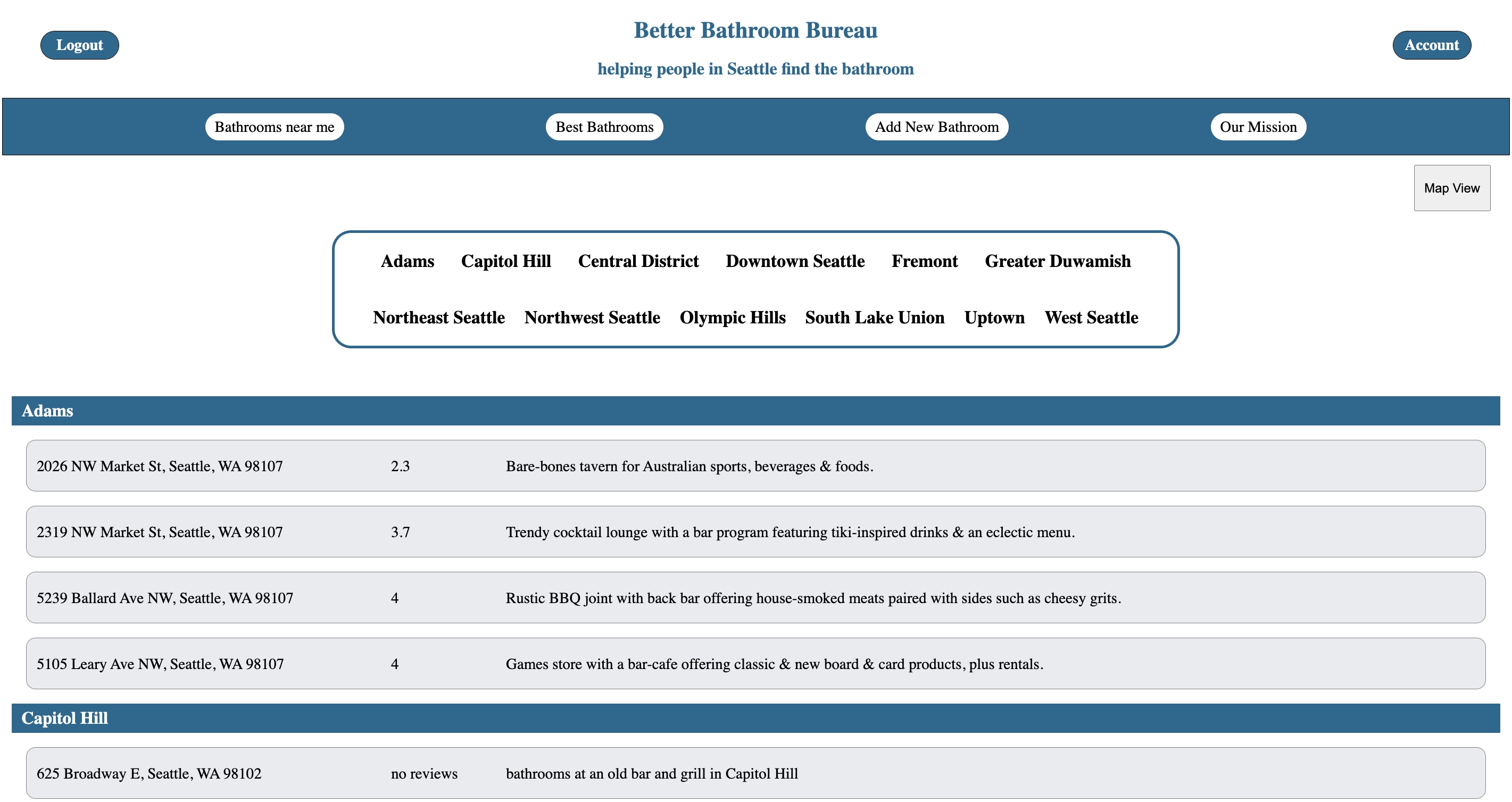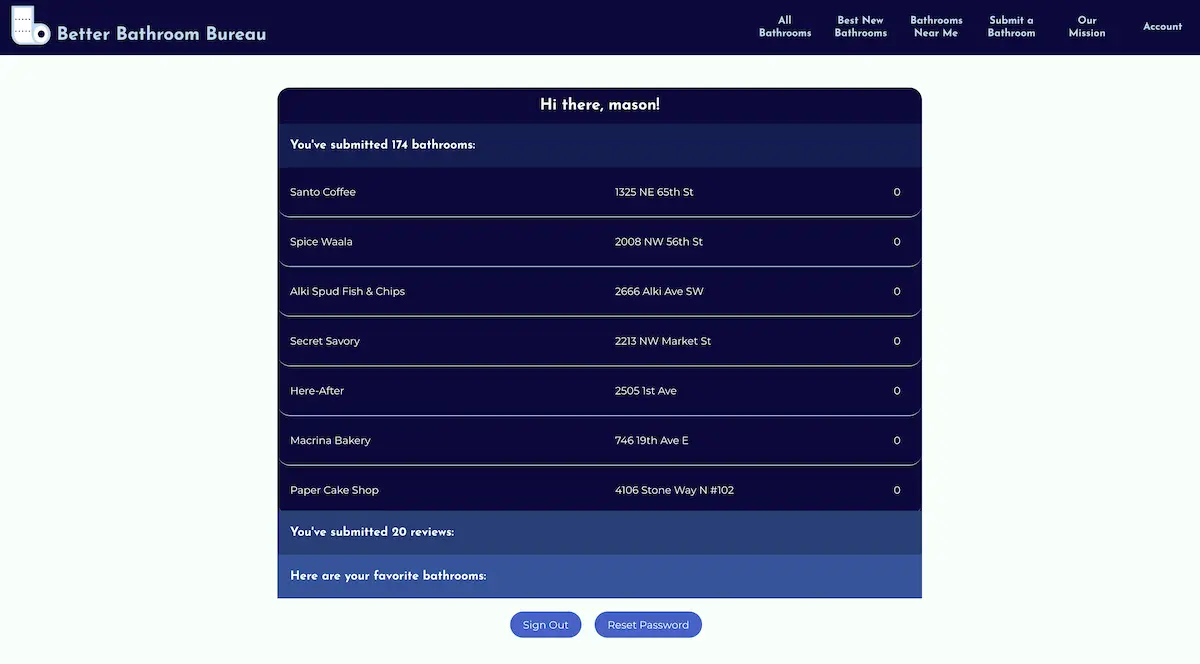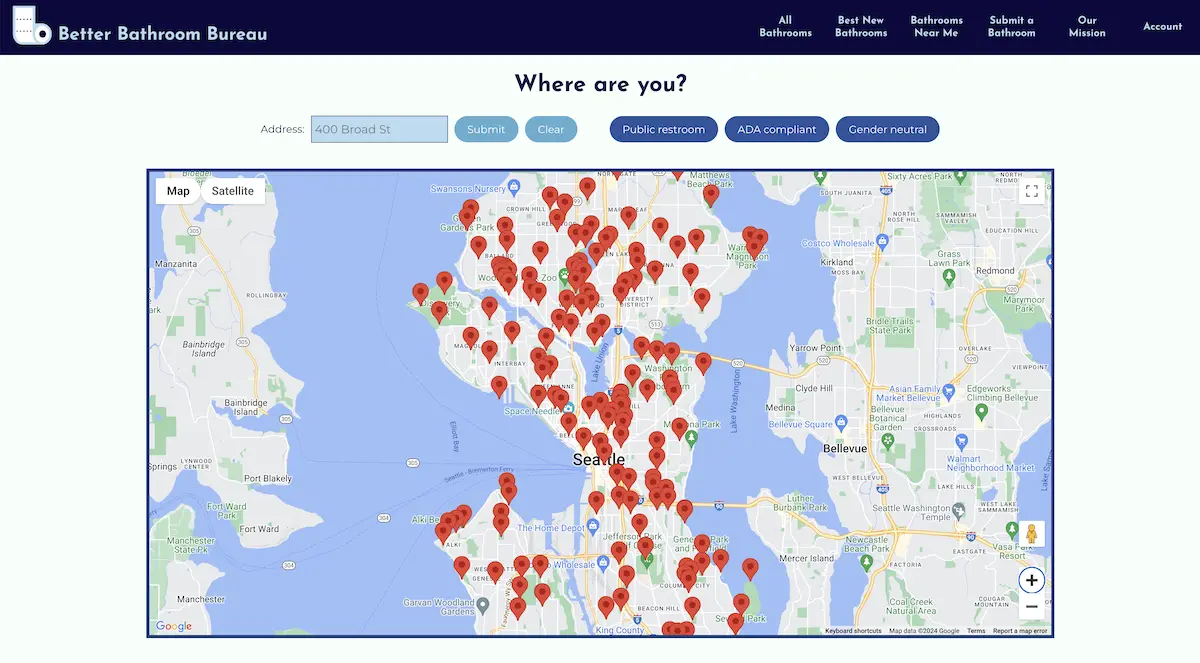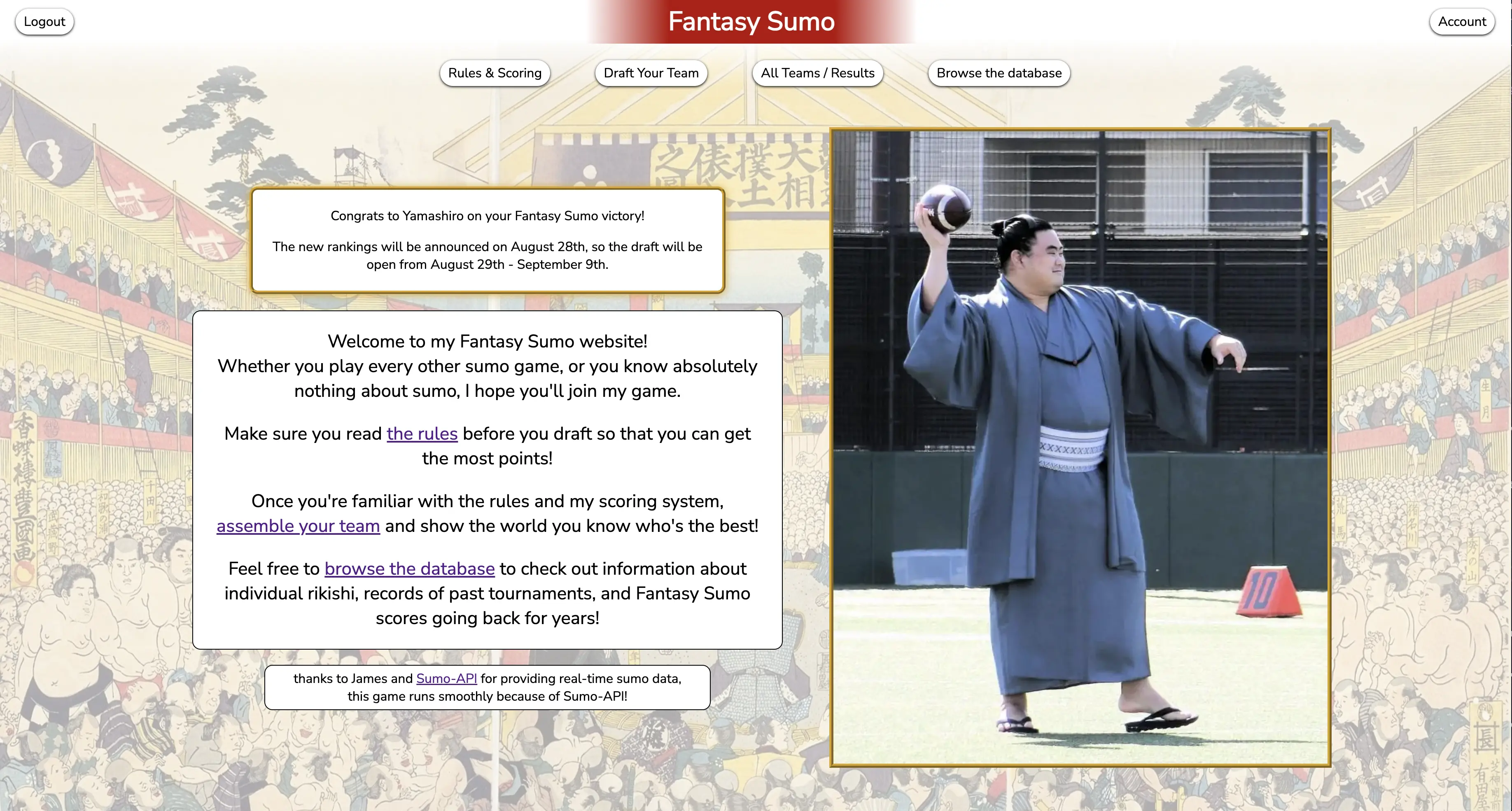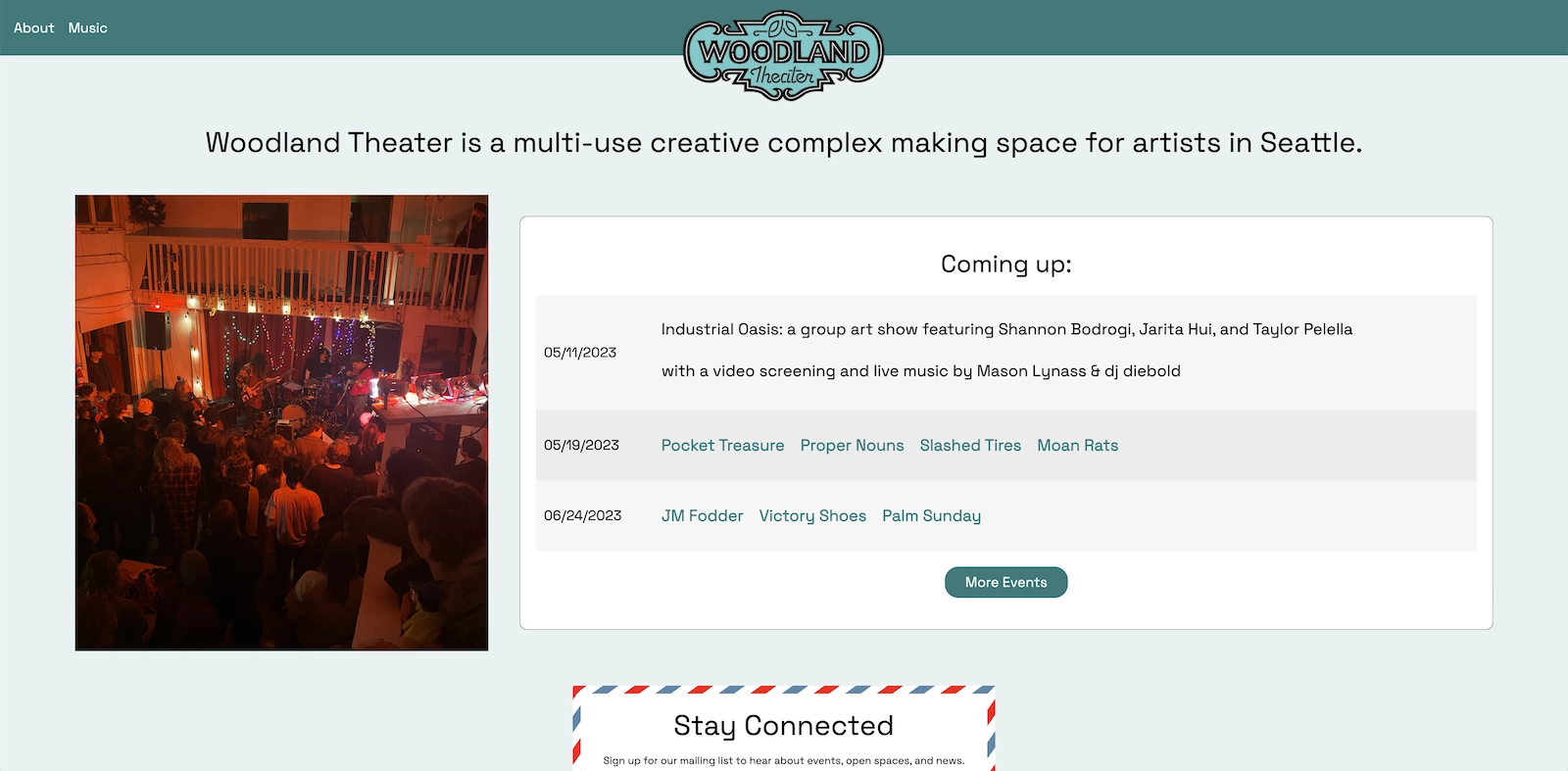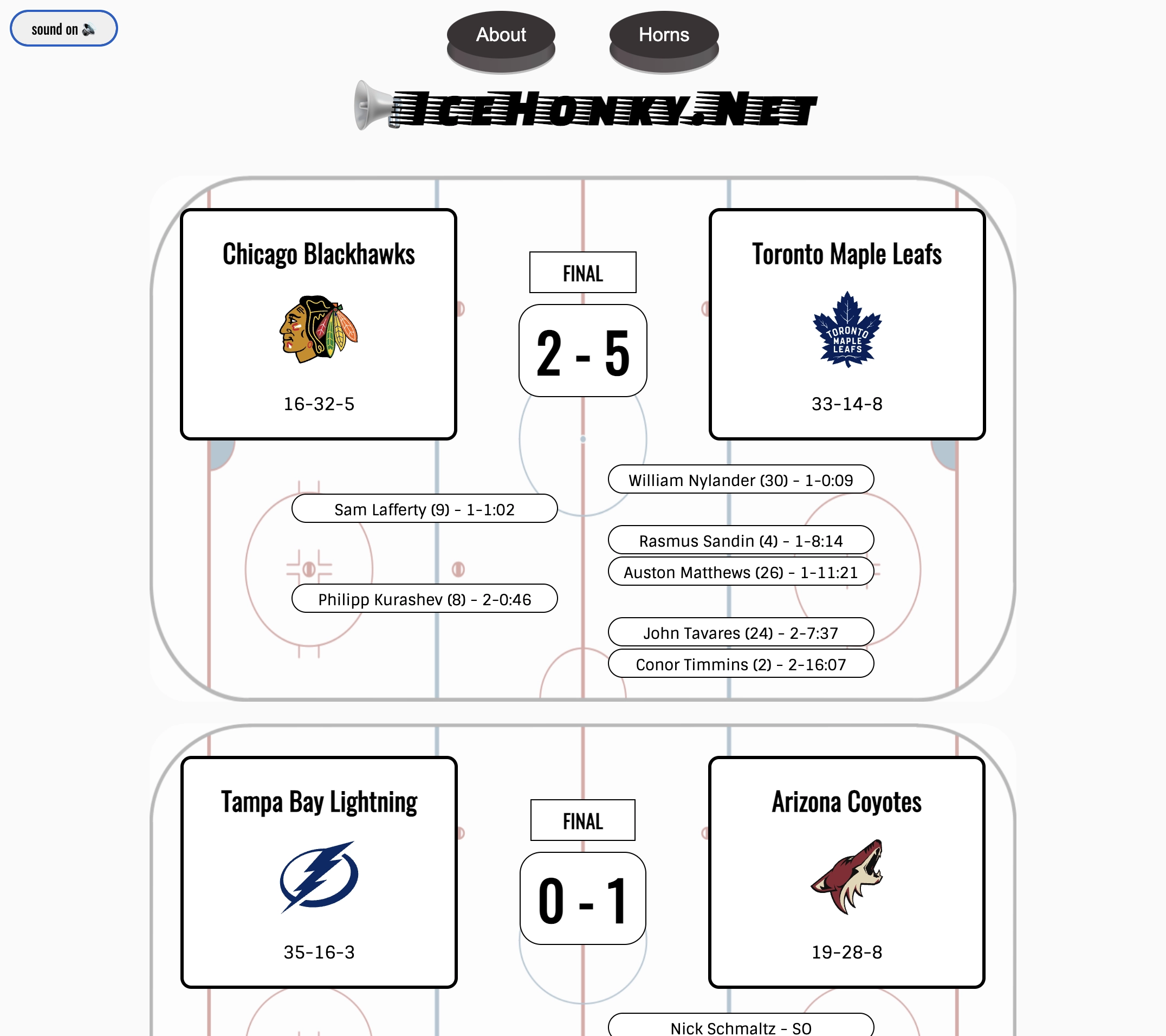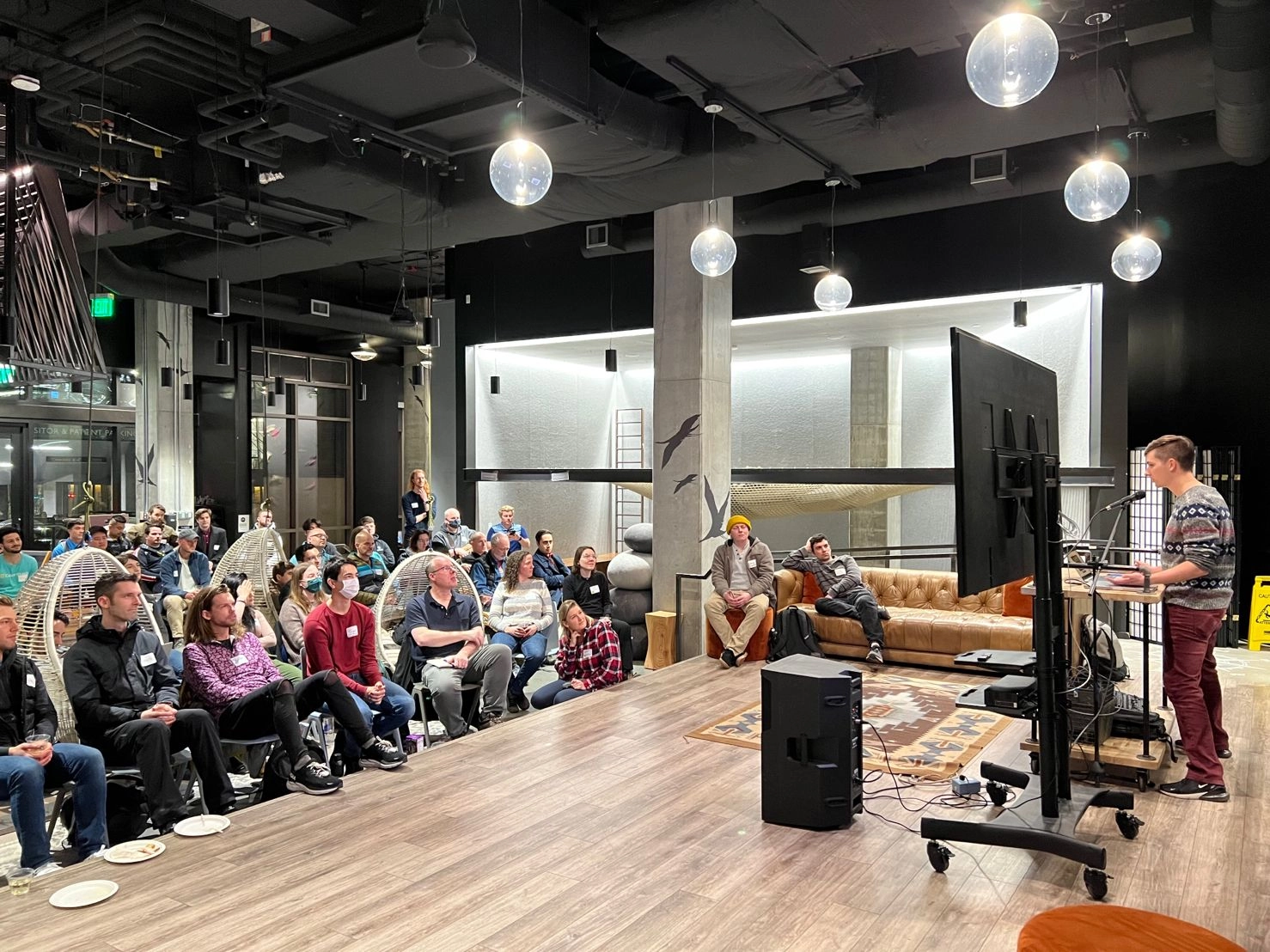Better Bathroom Bureau began as a Tumblr blog I started right
after I moved to Seattle in 2015; I reviewed bathrooms I visited
out of 10, detailing highlights or lowlights in bathroom function,
cleanliness, and style.
During our time in the Flatiron School software development
bootcamp, my buddy
Alex
and I worked together to build an alpha version of the Better
Bathroom Bureau website. We used React.js with some custom CSS to
give it a "Craigslist-y" look on the frontend, and Rails to handle
the backend and store all of our data.
In the summer of 2023, after spending some time on other projects
and priorities, I began to expand on the previous work from
bootcamp and build a performant, user-friendly, fast web
application, with help from Alex, Evan House, and Matt Phan.
On the BBB website, users can view bathrooms stored in the BBB database in a list or on a map, optionally
using filters or a search bar for precise searching. Users can also login or create an
account to contribute new bathrooms to the database, leave reviews
tied on bathrooms they visit, and save favorite bathrooms for future
reference.
Each bathroom submitted by users has its own page, with
information about its description and accessibility, its location
on a Google Map (thanks Google Maps API!), and reviews that site
users have left about their experiences.
Now that the website is live, I'm excited to open up the bathroom
discussion to other contributors and users around Seattle. This is
the kind of resource that works best with a lot of user input. We hope that people around
Seattle will contribute and the community will benefit from our
hard work and creativity!
